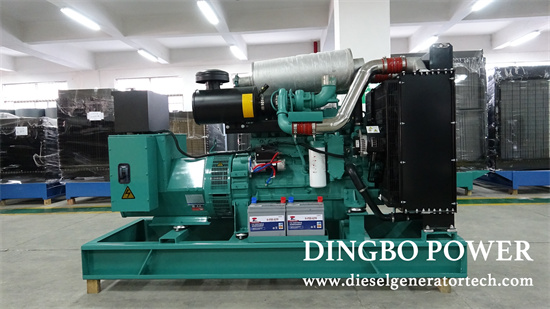Do you know what the program for detecting insufficient power of a diesel generator is? Firstly, check the fuel injectors for leaks and pitting caused by insufficient primary oil circuit pressure. Check the low-pressure fuel system. Insufficient pressure in the low-pressure fuel system can directly lead to insufficient power and fuel injector pitting. The pressure detection point of the low-pressure oil circuit should be located after the oil outlet of the fine filter. If there is no measurement space at this position, it can be measured in front of the return valve. The following are all reasons for insufficient pressure in the low-pressure oil circuit: whether the secondary filter of the fuel primary filter is blocked, whether the return valve is ineffective, whether there is excessive flow resistance in the oil pipeline from the fuel tank to the fuel pump, and whether the fuel pump provides sufficient supply pressure.

Another reason is whether there is excessive flow resistance in the oil delivery pipeline from the return valve to the fuel tank. If the resistance is too high, the return fuel will be insufficient and the fuel temperature will increase. If the oil pressure cannot be reached while ensuring that the filter element is not clogged, the return valve should be checked or replaced. If the pressure is still insufficient, check whether the flow resistance in the oil delivery pipeline is too high. If the pressure is still insufficient, check the fuel return quantity by removing the return end of the return pipe from the fuel tank and directly inserting it into an empty barrel.
Measure the return oil volume of the engine at maximum idle for 1 minute, which should be above 8L. Check the boost air pressure and exhaust temperature at full load. Only when the speed drops from the highest idle speed to the rated speed or even lower, can the engine output reach full load. At full load, the boost pressure in the intake manifold should reach at least 1.3 bar, and the exhaust temperature should be -450~480 ℃. If the fuel supply is sufficient but the boost pressure is still insufficient, the exhaust back pressure should be checked and should not exceed 500mmH2O.
Founded in 1974, Dingbo Power Generation Equipment Co., Ltd. is a professional manufacturer of diesel engines, generators and generator sets, and one of the earliest manufacturers of diesel engines, generators and generator sets in China. Since 1992, the company has been a qualified generator set manufacturer inspected by the National Internal Combustion Engine Generator Set Quality Supervision and Inspection Center. Over the years, the company has carried out extensive cooperation with Shanghai Diesel, Weichai, Sweden Volvo, Sino US joint venture Chongqing Cummins, American Qianglu and other companies, and has become a (OEM) supporting factory and technical center. It has 64 sales service departments nationwide, providing users with design, supply, commissioning and maintenance services at any time. Dingbo quality is worth depending on. If you want get more information, please feel free to send email to sales@dieselgeneratortech.com we will pay highly attention on your question.
Comments
Post a Comment